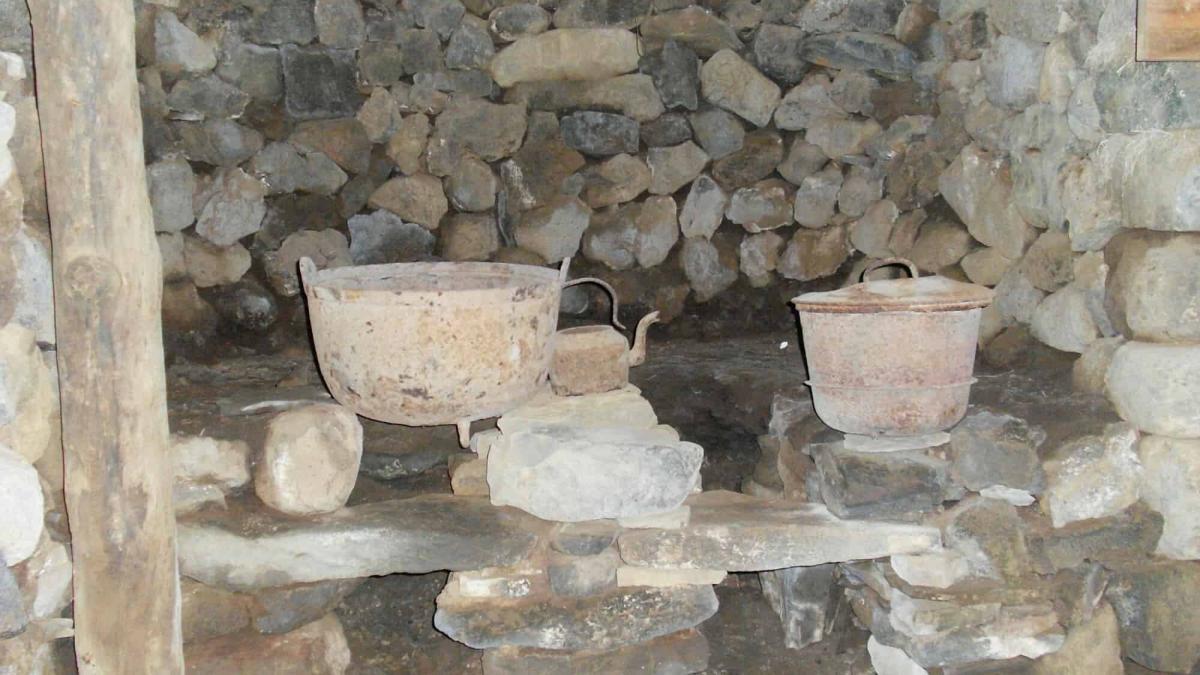Free and exclusive discount codes for hundreds of tours and & travel services in Iceland
Subscribe to instantly receive discount codes for tours, car rental, camper van rental, and outdoor clothing rental.Thank you! ❤️
Jon Heidar, Editor of Stuck in Iceland Travel Magazine
“You will just have go and join the cows in the field” the lady from the Icelandic National Museum said smiling. It had been a long drive to the medieval farm of Keldur in in the southern region of Rangárvellir close to the highly active volcano of Mt. Hekla and I was in desperate need of emptying my bladder.
I took a long look at the cows and the lack of shelter in the field and decided to toughen up and joined her as she gave us a guided tour of the ancient farmstead of Keldur in the southern region of Rangárvellir. For those interested the word “Keldur” basically means a source of water. This is fitting as there are many of those around the farm of Keldur.

Ancient battlegound?
Keldur boasts the most oldest hall in Iceland which is believed to have been built in the 11th century although archaeological research indicate that Keldur was inhabited before the year 1000. This is supported by the Icelandic sagas as it is mentioned in the famous Njáls saga, a highly violent tale of drama, betrayal and blood feuds. Many fights in the story take place around Keldur and some say that anicent graves discovered there contain the bones and weapons of those men who were killed in those fights. Nice theory but we will probably never know.

All of this makes Keldur a special place in country where very few really old man made structures exist, if you exclude a few caves that is. The old farm is now a museum run by the Icelandic National Museum but the farm itself is really a collection of buildings from various periods in history.

I was most interested in the old hall which is divided into several spaces:

1. Hallway with worn stones on the hard dirt floor. I wondered how many generations of people had trodden on them and I also thought about how divorced we have become from our past.
2. Kitchen – there is no dishwasher, sink or fridge. Just a really ancient stove which our foremothers would have been very familiar with. And no, Icelandic men would not have known their way around a kitchen in the old days.

3. Storage area with large barrels which would have contained fermented meat, whey or “skyr”, an Icelandic dairy product which is a bit like yoghurt, only better!


4. A hall which connects to a more recent structure, has a sleeping loft and contains perhaps most intriguing aspect of the Keldur hall, the escape tunnel (see below)
The lady from the National Museum told us that Keldur used to be owned by a famous and a very pious chieftain in the tumultuous Age of the Sturlungar called Jón Loftsson (died in 1197). His adopted son was the poet, writer, historian politician (and serial womanizer) Snorri Sturluson (1179 – 1241). It is really possible that he would have visited Keldur although there is no direct evidence. The curator pointed to some really old carvings on the wood in the hall and said that she liked to think that Jón and Snorri would have spent an afternoon making those carvings. Who knows. Maybe they did, and maybe they didn´t.


The coolest part of Keldur is the escape tunnel. It was discovered by accident in 1932 and it leads from the floor of the hall into a slope out of sight from the farmstead. It was definitely built during the age of the Sturlungar and many authorities seem to believe it was constructed when Hálfdán Sæmundsson and Steinvör Sighvatsdóttir lived at Keldur from 1223 – 1265. They had every reason to be paranoid and undertake such a massive construction work. They were closely linked to the chieftains who vied, lied, cheated and killed for power. At one time they were held hostage in their home by a war band of one hundred men when Hálfdán refused to help his brother in law, Kolbeinn Ungi before the battle of Örlygsstaðir in 1238. Steinvör was a member of Sturlungar clan but lived close to one of their main enemy. So building the tunnel was only prudent.




Beheading your pursuer is just what you do
The tunnel was subsequently rebuilt so it is pretty good shape these days. The curator told us that the tunnel was narrow at first and then it widens out. This forces those who want to go down there to go head first. This enables those who are escaping to easily kill anyone pursuing them, bottling up the tunnel and delaying pursuit. She insisted on the pursuer would be beheaded as he would be crawling to the wider opening. “That´s how they did it those days”
I didn´t dare to dissagree.

How to get there:
When driving on route 1 in the South of Iceland then turn at the road no 264.
View Larger Map
Ready for a Road Trip in Iceland?
Support this blog by getting a great deal on renting a car from Budget.




